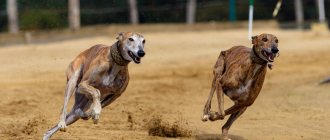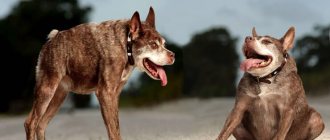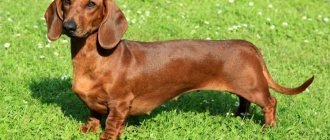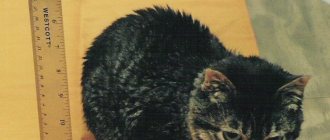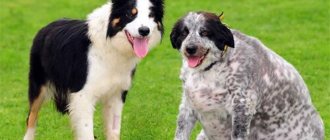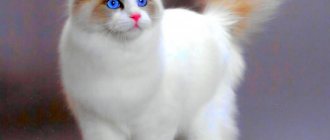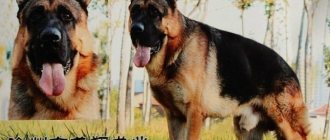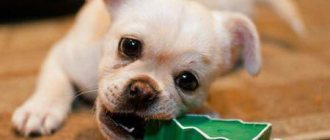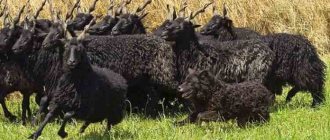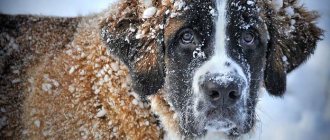Historical background
Historically, the pit bull was raised as a fighting dog. It is the pit bull's past that causes many of them to be aggressive. However, all dog breeds fight, even the friendliest and most playful dogs can fight. A pit bull may have a slightly stronger reaction to other dogs and may be quicker to react aggressively if provoked. A bite from a pit bull is more likely to result in injury as it is difficult to restrain and the breed itself is very strong.
Are Pitbulls really that dangerous?
In mid-February, police in Nassau County, New York, were canvassing homes in search of two pit bulls that had gotten loose and attacked a teenager and three women within 30 minutes on Wednesday, February 13th.
“One of them literally jumped on my leg, and the other one tried to jump on me, but I fought them off, throwing punches at them,” Jenille Mannig, 24, told CBS. “They wouldn’t let me go if they could grab my leg.” Due to his leg injuries, Mannig has difficulty getting up and down stairs, CBS reports. “It was as if these dogs were trained to kill, trained to mercilessly attack people,” she says.
But do pit bulls deserve their reputation as terrible attack dogs? A huge amount of evidence suggests that this is indeed the case. A five-year review of dog bite injuries conducted by the Children's Hospital of Philadelphia and published in 2009 in the journal Plastic and Reconstructive Surgery found that nearly 51 percent of all attacks were committed by pit bulls, nearly 9 percent by Rottweilers, and 6 percent of attacks were committed by dogs. related to crosses of these two breeds. In other words, a huge percentage (2/3) of all dog attack-related injuries are attributed to these two breeds—pit bulls and rottweilers.
Other studies confirm this statistic. A 15-year study published in 2009 in the American Journal of Forensic Medicine and Pathology found that pit bulls, Rottweilers and German shepherds were responsible for the majority of fatal dog attacks on people in Kentucky. A 2011 study published in the Annals of Surgery found that "attacks by pit bulls are associated with higher injury rates, higher medical costs, and a higher risk of fatality than attacks by other dog breeds." The authors of this study conclude that to meaningfully reduce dog bite-related fatalities in the United States, strict regulations regarding pit bulls are needed.”
People orientation
Due to some aggressive traits and a historical fighting background, there is a common misconception that pit bulls are vicious. These dogs tend to just be more people-oriented than other animals and even love to cuddle with them. Their muscular build and image of a powerful dog has created the public perception that pit bulls are something to be feared, but the vast majority of them would never attack a human. Those that attack people have most likely been abused or trained to attack.
Despite their past fighting days, pit bulls even received the nickname “educator”, thanks to their friendliness and love for children. Many also serve successfully as therapy companion dogs in hospitals and nursing homes!
Description of the breed
The American Pit Bull Terrier, whose breed characteristics are not so clear, belongs to the category of fighting dogs. It is believed that criminals often use it in their showdowns, because a dog’s mouth is like a deadly weapon.
The dog itself is very muscular and strong. Her physique is very harmonious. The head is small, the muzzle is slightly pushed forward, but not sharp. The nose can have different pigmentation. The lips do not cover the jaw much, so you can often see the dog's dangerous fangs sticking out.
The eyes are small, set very wide, almost triangular in shape, only elongated. This makes an additional unpleasant impression. The color is most often brown, almost a “tea” shade.
Cropped pointed triangular ears as evidence that the dog is constantly on the alert. She monitors all sounds that may seem suspicious and reacts to them immediately. The neck is wide, powerful, of medium length and goes into an equally developed chest.
The limbs are muscular, with the hind limbs set wide apart. The dog has very hard and elastic pads on its paws. The tail is a natural extension of the line of the spine, tapering towards the end. Despite its power, the dog’s weight is small, about 15–23 kg. Average height: 45–48 cm.
The coat color is usually any monochromatic, red-brown, brindle, piebald. Regardless of the base color, white spots may occur. Usually on the head, paws, chest and stomach. If you want to breed puppies, then the dog is, in principle, quite fertile. Most often 6–8 puppies are born in a litter.
Dogs, like many of their other relatives, live 10–15 years.
Training and socialization.
If an adult pit bull already has an established aggressive disposition towards dogs or people, it is unlikely to be re-educated. Socialization is a particularly important element in teaching a pit bull to be good, and it is most important that social skills training begins in puppies as early as 7 weeks and continues until at least 4 months of age. It’s even better that the training continues throughout the dog’s adult life. Without socialization, your pit bull at the park can cause harm to many other animals and you will have a hard time getting it under control.
Instead, take your growing buddy to puppy classes, which can be attended from 2-3 months. Through valuable play experiences and socialization, your puppy will be able to hone his social skills and get to know other dogs better. A negative experience with another dog during the period of socialization can lead to the development of aggression in adulthood. A pit bull often sees cats and other furry animals as prey, so if he is already aggressive towards pets, don't try to make him friends with them.
Character of the breed
Willful, independent, self-confident - such a description of the American Pit Bull Terrier dog would be quite appropriate. Moreover, her intellectual abilities are not so high; she has more instincts that drive her behavior.
Given this nature, the pit bull terrier must be trained. It is advisable to have your dog trained by professionals. Because if the feeling of “master – subordinate” is not instilled, the dog can cause harm to the owner in an outburst of anger.
Those who get this dog in urban conditions believe that the dog can easily live in a family. Indeed, pit bulls can treat family members and owners favorably and even show affection. But they will not be able to cope with aggression that surges for any reason. For example, they are jealous of their belongings, food and territory.
They don't like being yelled at. Pit bulls are capable of harboring a grudge, for which revenge can emerge suddenly.
You should not keep a dog of this breed together with other animals. Such restrictions often lead owners to the idea that it is better to keep the dog in an enclosure.
Such dogs tend to get into fights or try to demonstrate their physical superiority. For this reason, the American Pit Bull Terrier should not be walked by a child or a physically weak person. They simply cannot cope with the impulse of a pit bull, which instantly explodes and tears away in the direction it needs.
Nutrition and care
The American Pit Bull Terrier dog breed does not require much grooming. The main task is to release energy. For this purpose, walks should become regular. Moreover, it is not their duration that is important, but what the dog does during this time. Either there should be a large mileage of walks, or active games and training, but away from children and other dog owners.
The coat can be brushed once a month. Even during the process of molting, she does not scatter much around the apartment, which pleases the owners. You can bathe her if absolutely necessary. It will be enough to carry out such procedures once every six months if the dog does not walk in the contaminated area.
The dog can withstand the cold, but if you make room for it in the enclosure, you should provide insulation. It is worth examining your dog’s teeth in order to notice in time the tartar that needs to be removed, otherwise there will be an unpleasant odor.
Nutrition should be selected taking into account the dog’s weight and age. Pitbulls are not prone to obesity, but this does not mean that you need to feed them every hour. The dog will be able to eat comfortably in the morning and evening, provided it has access to drinking water.
In order for a physically strong pit bull to receive everything it needs, almost 50% of the diet must be given to natural meat. This way, the dog will receive the necessary proteins and fats. Carbohydrates become the main source of energy. The dog eats well porridges or soups containing rice, buckwheat or other grains.
You can also feed them with specially formulated food. To support the body, eyes prone to blindness in adulthood periodically give the dog vitamin complexes. To check if there is an allergy to them, start with a small test dose.
The breed is not prohibited in Russia. If you have a great desire to own an American Pit Bull Terrier, you should remember about its exceptional fighting properties.
Breed reputation
Some owners use pit bulls to enhance their own masculine image, which also helps ruin the breed's reputation. Other owners directly encourage their dogs to act aggressively. Still others use various blows, jerks with a leash, etc. in training. It is important to remember that a pit bull's aggressive behavior can cause more damage than most breeds due to their breeding and strength. Teach your pit bull to be good through your own sense of responsibility, consistency and kindness towards your animal.
Training and education
A well-mannered, socialized dog with warm feelings towards its owner, with a strong, stable psyche, will not show aggression towards people living in the same house with it.
The most serious mistakes of careless owners, as a result of which the dog can become uncontrollable and dangerous, according to experts, are:
- complete lack of training;
- wrong approach to education;
- aggression towards a dog (physical punishment);
- encouraging aggression on the part of the dog towards other animals (cats, stray dogs) or people;
- deliberately raising dogs that are aggressive towards humans.
Experienced trainers highlight the following basic rules that pit breeders should strictly follow;
- clear hierarchy (the owner is the leader);
- socialization of the dog from a very early age;
- strict adherence to the daily routine;
- uniform rules (prohibitions) and the requirement for their strict implementation;
- long walks 2 times a day and providing the animal with the necessary level of physical activity;
- regular training starting from 4 weeks;
- visiting specialized schools (required for inexperienced breeders).
Thus, if we talk about whether well-mannered pit bull terriers are aggressive, whose owners pay enough attention to their pets, take care of their needs and take into account the characteristics of the breed, then we can say with confidence that the percentage of dogs that have certain behavior problems is no more than in any other breed. The only difference is that an aggressive 5-kilogram Chihuahua makes many people smile, while a 30-kilogram pit bull brings real fear for its life.
Important! At the first signs of aggression or disobedience on the part of your pet, you should seek help from experienced trainers who will help identify and eliminate problems in training, as well as correct the dog’s behavior in the early stages.
Pit bulls are not as smart as other breeds
Some people think that pit bulls lack the intelligence of other large breeds such as Labradors. Pit bulls are actually quite easy to train. Their willingness to learn and desire to please their owners makes the process easy, allowing them to learn even the most difficult tricks very quickly. Pitbulls are also excellent climbers : many of them can climb trees. They also love puzzles, various toys, hide and seek, and other types of games.
Pit Bull Health and Diseases
American Pit Bull Terriers can suffer from so-called occupational diseases of working breeds.
Among them are aortic stenosis, usually detected during exercise or game testing, and hip dysplasia. Moreover, even a person far from veterinary medicine can recognize the symptoms: the dog has difficulty breathing, he gets tired quickly. Pit bulls are also prone to hormonal problems. Thus, disturbances in the functioning of the thyroid gland result in the development of hidden pathologies that remain with the dog throughout its life, and, among other things, lead to a rapid gain of fat mass. “Americans” also suffer from allergies.
Pitbull in a protective collar
Varieties of pit bull breed
There are several varieties of this breed:
- The American Pit Bull Terrier is the epitome of the classic pit bull appearance. Offers many different colors other than merle. very impressive .
- English Staffordshire Pit Bull Terrier (Amstaff) - has common ancestors with APBT, therefore it is extremely similar to it. The difference between these breeds can only be in size - Amstaffs are slightly higher at the withers. Perhaps this is due to the fact that they have slightly more terrier blood than bulldog blood.
- The Albanian Pit Bull Terrier is distinguished by its unusual colors. For example, merle (merle) makes them very expensive dogs and at the same time often “rewards” them with congenital defects, such as deafness, blindness, and low immunity. Stillborn puppies are common in Albanian pit bull litters. From the admixture of Dalmatian blood, Albanian pit bulls got a leopard color.
- The dwarf or mini pit bull (crossed with a Patterdale Terrier) differs from the classic APBT by its pronounced stockiness. In fact, it is not small at all - the point is in the structural features of the skeleton.
- The French Pitbull is best suited to the name “dwarf”. This is a mix of a bulldog and a pug. The body is stocky like a bulldog and the size is like a pug.
- The Cuban Pit Bull Terrier is the largest size in the pit bull line. Can reach 50 kg. This is the largest pit bull in the world - the “Hulk” of pit bulls.
- The African (Boerboel) is still not exactly a relative of the APBT. It belongs more to the ancient genus of mastiff breeds and is native to Africa.
These days, the American Pit Bull Terrier breed is especially feared. This dog gained fame as an evil monster only in the 1980s. At the beginning of the twentieth century, pit bulls were considered a symbol of the American nation, a truly American breed of dog. Their courage, strength, dexterity and bravery were extolled, as was their ability to get along with children.
At that time, pit bulls were considered ideal nanny dogs. Common myths about pit bulls have no basis other than speculation and ridiculous fears.
Myth: A pit bull has a death grip on its prey and its jaws cannot be released.
Fact: Pit bulls develop muscles and bones in the same way as all other breeds. Dog experts say there is no evidence that pit bulls have a death grip.
Myth: Pit bull terriers do not feel pain
Fact: There is nothing special about the nervous system of these dogs that makes them insensitive to pain. Bred as a fighting breed, pit bulls can handle pain much more easily . One of the reasons for this is considered to be a slightly shifted hormonal balance, which brings the dog into a state where the main thing for it is to carry out a command or the action it desires. In this case, the pit bull may indeed not respond to painful stimuli.
Breed standard
There are two types of American pit bull terriers: bulldog type and terriers. There are no strict requirements for weight: it can vary from 12 to 36 kilograms. On average - 14-28 kg.
External characteristics:
- The head is medium length, rectangular. The skull is flat and wide. The cheeks are convex.
- The muzzle is square.
- The jaws are strong and powerful. Scissor bite.
- Nose with wide open nostrils. The lobe can be any color.
- The ears are high-set and natural. Cupping is allowed, but not mandatory.
- The eyes are almond-shaped. Any shade of cornea.
- The neck is convex, muscular, dry, widening towards the withers.
- The back is strong, short, sloping.
- The shoulder blades are set obliquely and strong.
- The chest is not wide and deep. The ribs are closely adjacent to each other, moderately convex.
- The tail is set low, short, tapering towards the base.
- The limbs are long and strong. Medium sized paws. The gait is springy.
- The coat has no undercoat, lies close to the body, is rough and short. There is no fur on the belly.
Any color is allowed (except merle). Can be brindle, solid, with markings.
Pit bulls and legislation
Some states and cities have already responded to the findings of these studies. According to a story in the Baltimore Sun, the state of Maryland classifies pit bulls as "inherently dangerous" and their owners are held liable for injuries caused by attacks by their dogs. Even the US Army admits that pit bulls are high-risk dogs. Therefore, their use in a number of troop cantonments is prohibited. Pit bulls, along with several other breeds, are among the dogs considered most likely to attack people, causing serious injury. The Centers for Disease Control and Prevention analyzed statistics and found the following dog breeds to be the ones associated with the most dog bite victims:
— Pitbulls; — Rottweilers; — German Shepherds; — Husky: — Crossbreeds with wolves; — Malamutes; — Doberman pinschers; — Chow-Chow; — St. Bernards; - Great Danes. Regardless of how the data is sorted—crossbreds or pure breeds, injuries or fatalities—pit bulls consistently top the lists of attacks by a wide margin over other breeds. (Rottweilers usually come in second by a wide margin.)
